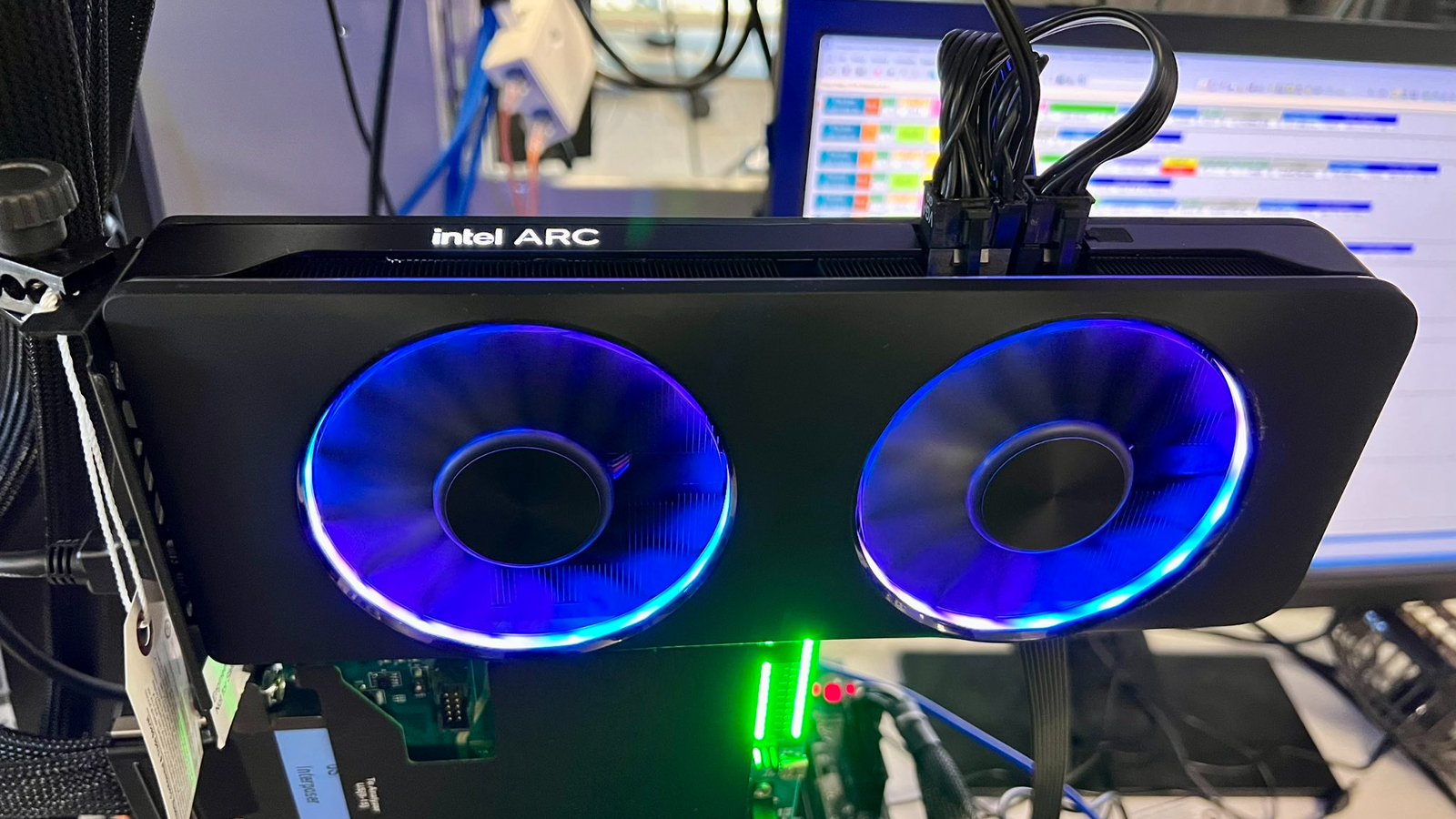Intel’s big gambit: going discrete
Intel's about to cause a ruckus with its Arc Discrete GPUs

After decades in the industry, Intel is finally going discrete with its new Ac GPUs, It’s an exciting time because, with a third player in the game, consumers benefit the most as competition can lead to more affordable pricing. for several reasons. Secondly, I’m hoping that the advent of the Arc GPU will be the final nail in the coffin of Intel’s integrated Iris Xe graphics. Lastly, more competition can breed innovations in the GPU market, which also benefits consumers.
I’ve been so intrigued about Arc that I caught up with Thomas Hannaford to learn about Intel’s new venture. Read on to learn about what Intel has in store for the future of graphics cards.
What’s Coming
Let’s meet the newest entrants to the discrete space shall we? First up, you have Intel's flagship Arc A770 graphics card priced at $329 and consumes 225W of power. The Arc A770 will face off against Nvidia's GeForce RTX 3060 Ti GPU and AMD's Radeon 6650 XT GPUs. We spoke to Anshel Sag, Principal Analyst at Moor Insights & Strategy, about this entry point for Intel's discrete graphics, and he thought it was a good move for Intel, "especially since most of Nvidia's new lineup starts at the very high end of the market, leaving the mainstream available for competition, especially considering Intel's pricing."
Intel offers the Arc A770 in 8GB and 16GB VRAM configurations with up to 512 Gb/s and 560 Gb/s of memory bandwidth while using TSMC’s 6nm process. The next member in Intel's lineup is the Arc A750. Priced at $289, the card offers 8GB of VRAM, and is meant to face down the likes of the Nvidia RTX 3060 and Radeon RX 6600 GPUs.
Up next in the lineup is Intel’s A580 GPU, which consumes 175W of power and is aimed at competing against the Nvidia RTX 3050. The A380 (6GB VRAM) is considered the company’s mainstream graphics card along with the entry-level A310 (4GB VRAM), and they sip power at just 75W and will face off against Nvidia's GTX 1650 and 1050Ti GPUs.

For me the A770, which starts at $329 for the 8GB VRAM version and features 32 Xe cores, 32 ray-tracing units, and a 2,100MHz graphics clock, is the GPU to watch. While most think of gaming when it comes to GPUs of this ilk, we shouldn’t forget aboutcontent creators. The A770 could be the sleeper GPU that brings a potent, affordable content creator Windows laptop to market. A laptop with an A770 will not only give consumers a potent gaming GPU, but also provide content creators with an affordable option outside of the Apple MacBook Air.
While the A770 might make for a laptop that competes with the MacBook Air for creators, I asked Sag if he believed Intel could produce a chipset to challenge Apple’s M-series CPUs and he said, “they could, but it’s also worth considering that Apple has been building to where the M series is today, and I think it may still be some time until they (Intel) figure out how to build such high-performance and low-power processors.”
Sign up to receive The Snapshot, a free special dispatch from Laptop Mag, in your inbox.
Intel claims consumers will see 42% better performance per dollar vs the RTX 3060, but we won’t know for sure till we get one in the hands of our talented lab team. Intel also claims the A770 with 16GB of VRAM will deliver better ray-tracing performance than the 3060, and again I will defer to our team of mad scientists.
Who will win the great GPU battle?
At the end of the day, Intel’s foray into the GPU market, if successful, is a great thing for consumers. The ripple effect will be more competitive pricing while also creating greater opportunities for consumers to afford a gaming machine or content creator's machine that won’t cost them a kidney.
If Intel can come into the GPU market with a potent mid-tier GPU that appeals to two different consumer groups, Nvidia and AMD should be a little concerned. Sure, AMD and Nvidia are the grizzled veterans, but eventually, older players do get replaced and are pushed into retirement. Speaking of retirement, according to Sag, Intel’s Iris Xe graphics aren’t likely going away anytime soon as he believes it “may still stick around in form factors where a discrete GPU isn’t necessary or won’t fit.” He’s right of course, but that doesn’t mean I have to like it.
Ultimately who will be the last GPU standing will be interesting to watch. I will give you a hint. It’s usually the company that figures out how to give consumers the most bang for their dollar.

Mark has spent 20 years headlining comedy shows around the country and made appearances on ABC, MTV, Comedy Central, Howard Stern, Food Network, and Sirius XM Radio. He has written about every topic imaginable, from dating, family, politics, social issues, and tech. He wrote his first tech articles for the now-defunct Dads On Tech 10 years ago, and his passion for combining humor and tech has grown under the tutelage of the Laptop Mag team. His penchant for tearing things down and rebuilding them did not make Mark popular at home, however, when he got his hands on the legendary Commodore 64, his passion for all things tech deepened. These days, when he is not filming, editing footage, tinkering with cameras and laptops, or on stage, he can be found at his desk snacking, writing about everything tech, new jokes, or scripts he dreams of filming.
